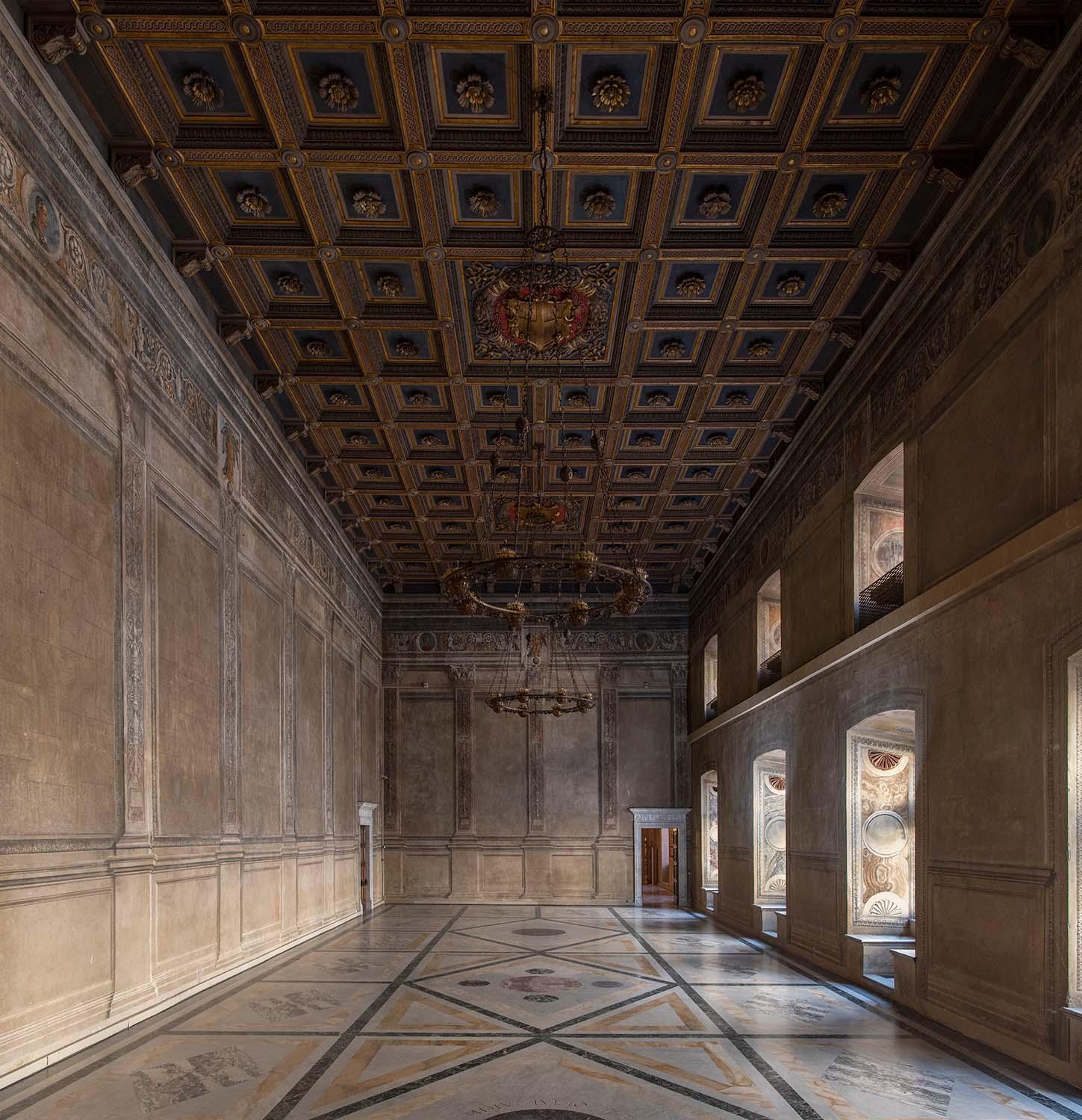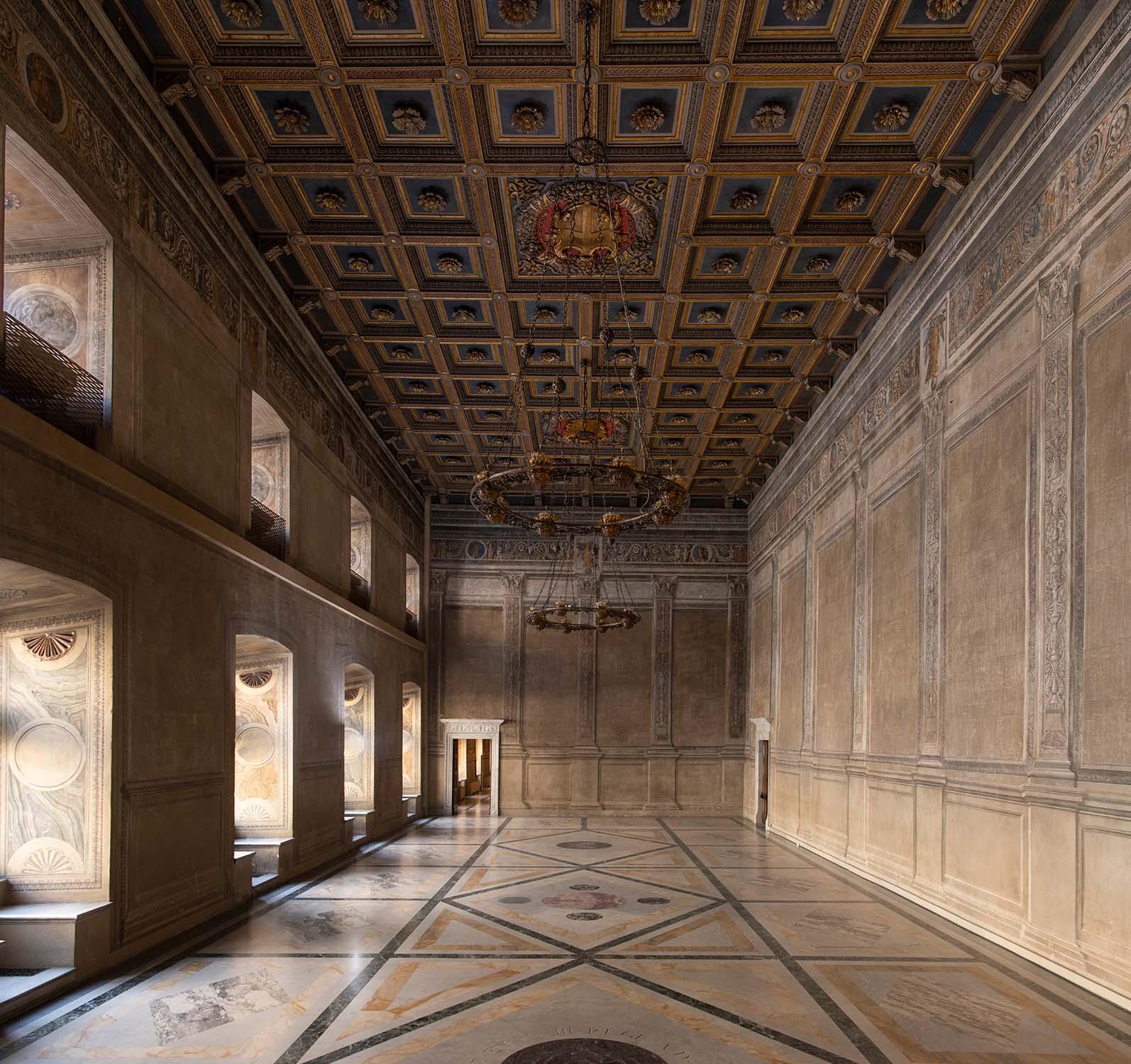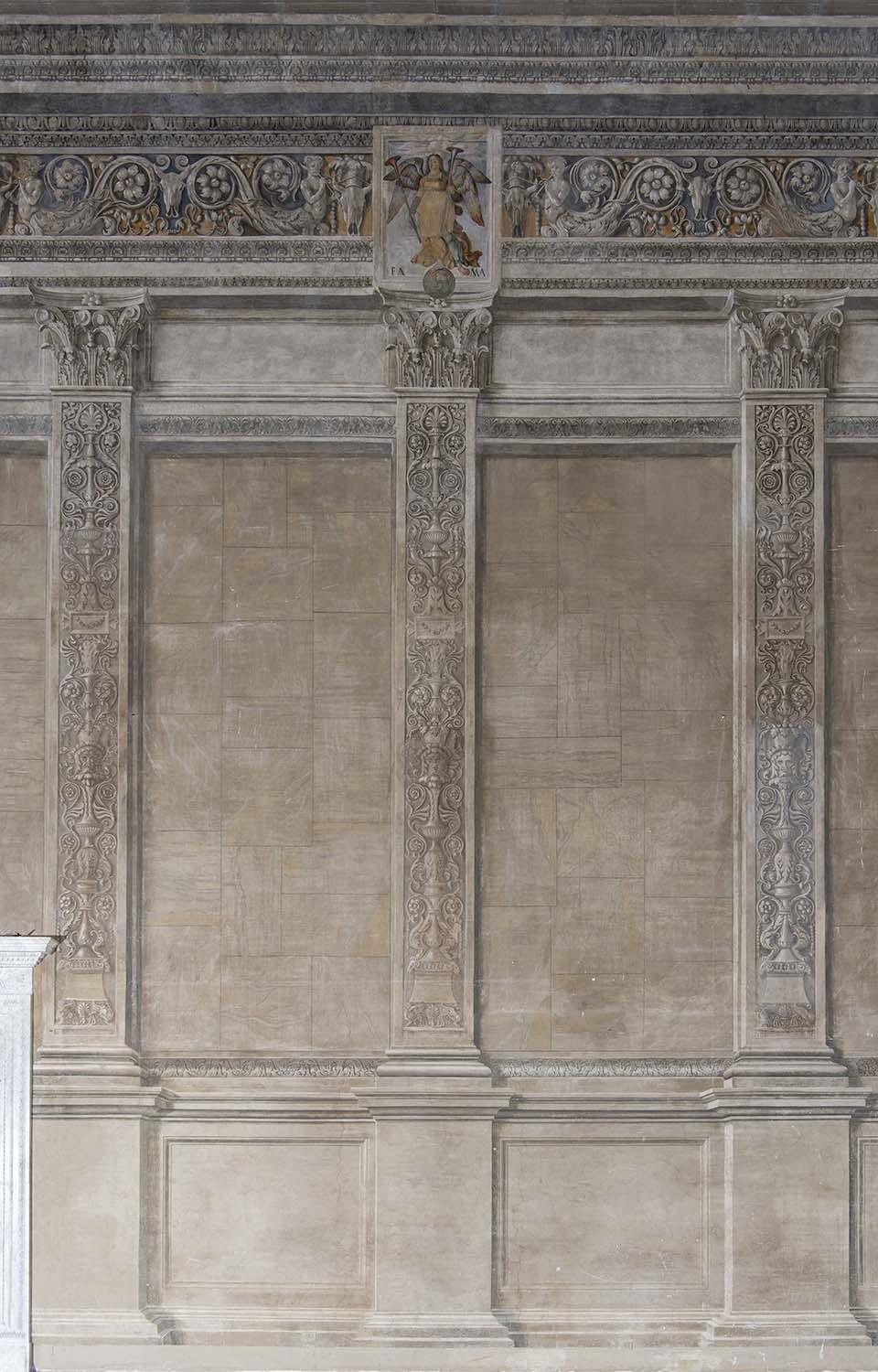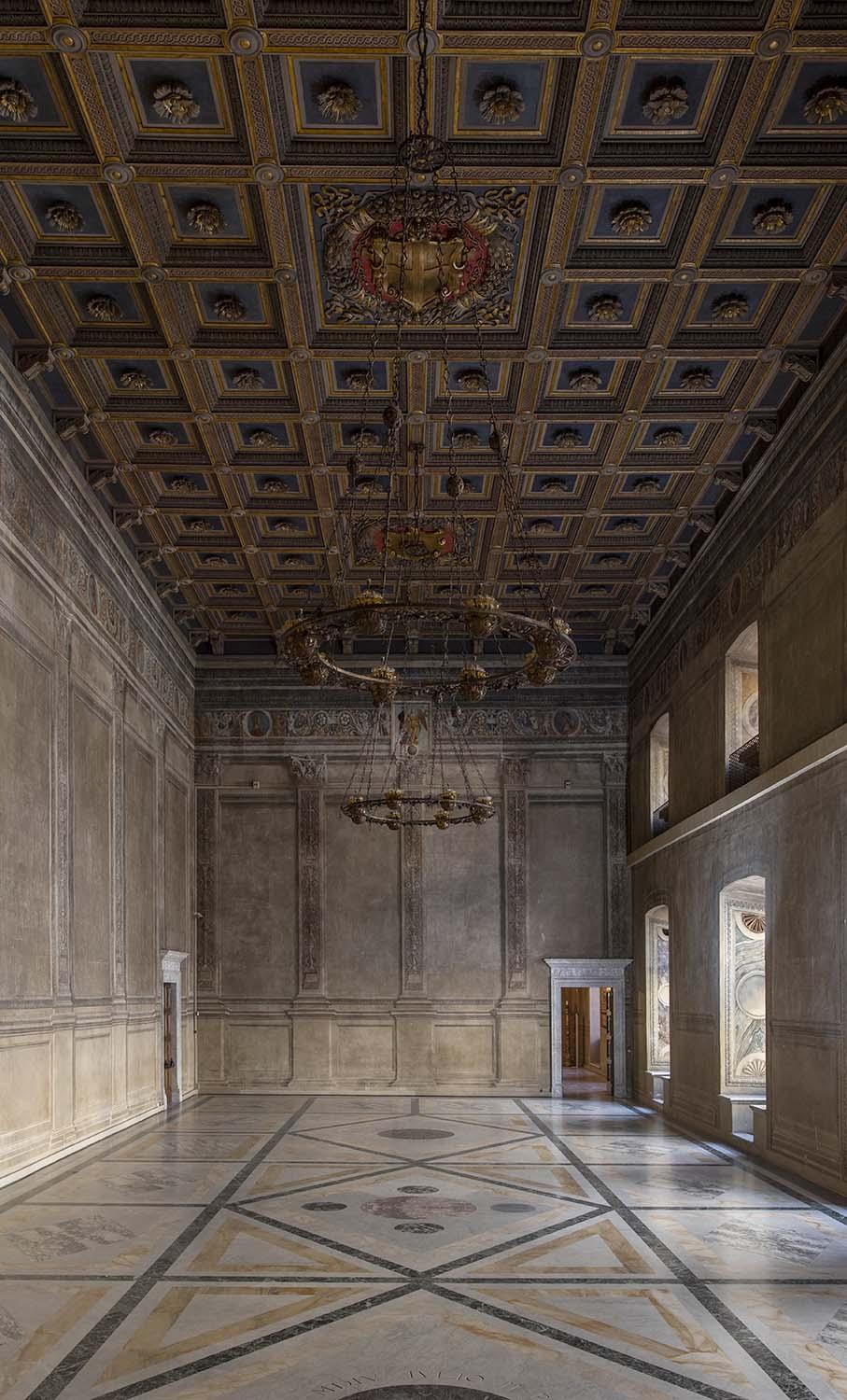Sala Regia
The third and final monumental room in the palace is also one of the largest in Rome and for this reason, it was often called the Aula Maxima
The room is part of the sequence of three monumental rooms commissioned by Cardinal Pietro Barbo immediately after his election to the papacy, taking the name Paul II (1464-1471), to make the palace an alternative residence to the Vatican. The name derives from its original function, since this room was originally used to welcome royalty, ambassadors and powerful people, and they would wait here until they were granted an audience with the pope. Measuring 37 metres long and a total of 430 m2, the Sala Regia is the largest in the building and one of the largest in Rome, which is why texts often refer to it as the Aula Maxima.
Still under construction at the time of Cardinal Marco Barbo (1420-1491), the room was finished under Cardinal Lorenzo Mari Cibo (c. 1450-1504). It was significantly altered in the following centuries, and underwent a complete renovation in the Renaissance style during the 1920s, under the direction of the first director of the Museum of the Palazzo Venezia, Federico Hermanin (1868-1953)
The walls feature grandiose painted architecture: in the centre of each of the three windowless walls appears the figure of Fame, winged and standing on a globe; on the fourth wall, the conches of the upper windows contain chiaroscuro medallions inspired by the bas-reliefs on the Arch of Constantine. This fifteenth-century decoration, which was whitewashed in the following centuries and covered by other paintings, was brought to light starting from 1917 by Hermanin. He restored the few surviving fragments – which he attributed to Donato Bramante and dated 1499 – and entrusted its reintegration to the painter-restorer Pietro de Prai.
The floor and ceiling are also from the 1920s. The marble floor follows the design of the architect Luigi Marangoni (1872-1950). The coffered ceiling was designed by Ermenegildo Estevan (1851-1945): Estevan took the central nave of the nearby Basilica of San Marco as a model, but replaced the insignia of Pope Paul II with the coats of arms of the Municipality of Rome, the Kingdom of Italy and the lion of Saint Mark, the symbol of Venice.















